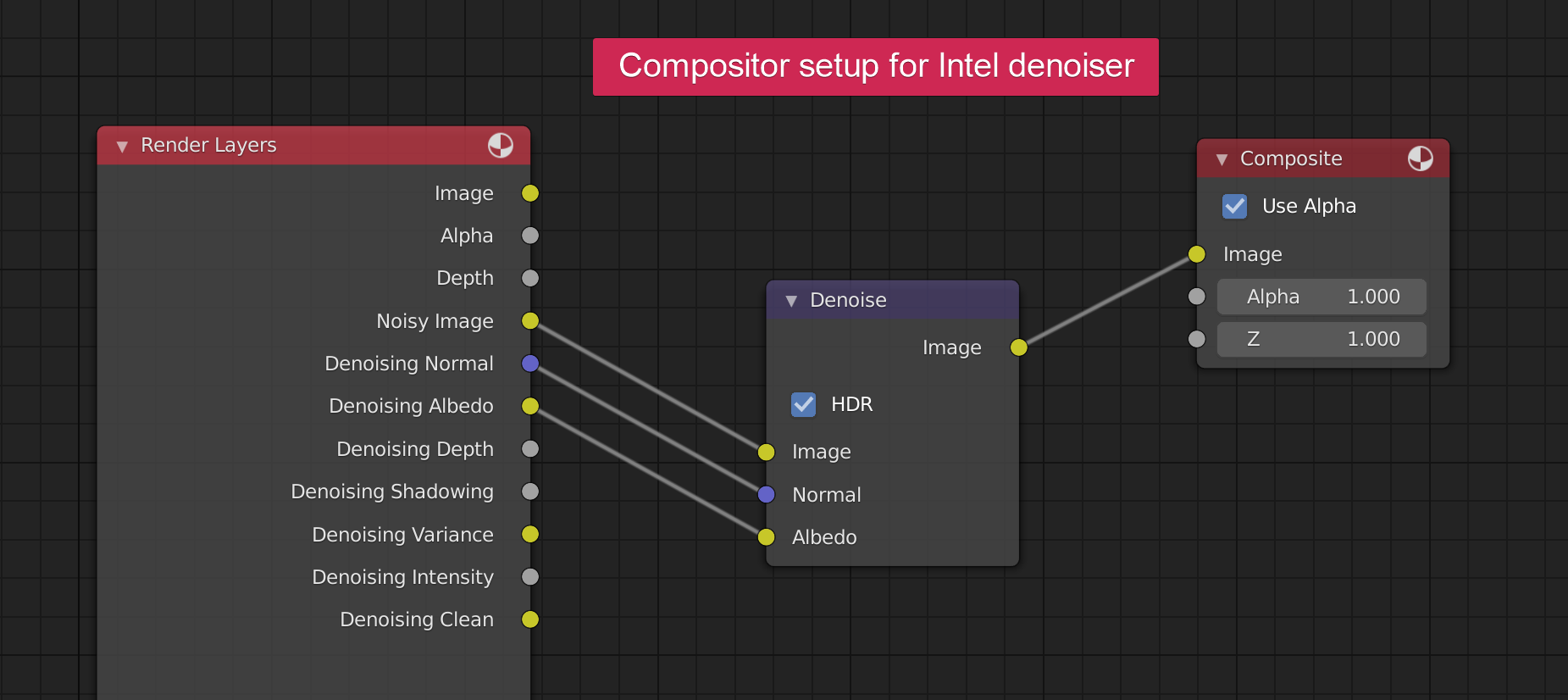

Simply turn on Denoising Data in the Layers property panel, add the Denoise node to the compositor, then connect the Image, Normal and Albedo nodes. Our features Intelligent Leveler Noise Reduction Filtering & AutoEQ Multitrack Algorithms Loudness Specifications Speech Recognition Encoding, Metadata &. The Intel Open Image Denoise is available as a node in the Compositing Tab, allowing developers and artists to adjust results post rendering using information from rendering layers such as Albedo. Using temporal denoising has some specific requirements and workflow to work properly. Play video to experience the demo and learn more about Intel Open Image Denoise in Blender. Blenders implementation of temporal denoising is based on the Optix AI denoiser.
#DENOISE BLENDER HOW TO#
This demo provides an overview of denoising and demonstrates how to make use of it in Blender 3D.

Read more Preview Passes in the Viewport Just like in Cycles, you can now pick which pass to see while in Rendered shading mode. The Intel Open Image Denoise library uses artificial intelligence to more effectively clean out the noise while creating a clean render. EEVEE Many improvements such as better group node sockets, normal mapping for non-mesh objects, performance and quality of render passes. However, to date many denoising techniques often created unwanted artifacts, patterns or even removed desired details from an image. D-NOISE is a next-gen AI denoising platform that rapidly accelerates the process of rendering noise-free images in Blender. Denoising technologies can clean up the noise with software. Noise is often created in a ray-traced image when there is not enough light or samples per pixels available to render the pixels accurately. The Intel Open Image Denoise library is part of the Intel oneAPI Rendering Toolkit and uses AI to more intelligently create clean higher quality denoise results in less time, without undesired artifacts or patterns in the render.ĭenoising is helpful when needing to quicken the rendering time especially with renders having low light or shadows. The Intel Open Image Denoise library is available for use in Blender version 2.81 or greater, allowing to game developers and digital content creators to more easily generate quality ray-traced render in less time.


 0 kommentar(er)
0 kommentar(er)
